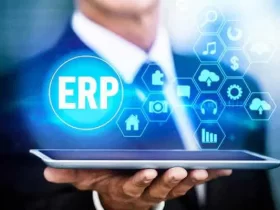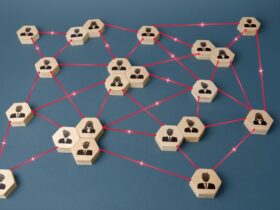In today’s fast-paced business world, compliance is no longer just a box-ticking exercise—it is a core component of sustainable operations and ethical leadership. As the workplace evolves, HR professionals must tackle a growing range of legal requirements, ethical considerations, and cultural expectations. From labor laws and safety protocols to diversity practices and data protection, compliance intersects with every facet of employee management.
Implementing effective HR compliance solutions ensures companies not only meet regulatory obligations but also build a culture of trust, accountability, and innovation. This article explores the benefits of embracing HR compliance as a strategic priority, the risks of noncompliance, and the tools and tactics that empower HR teams to lead with integrity.
The Costs of Nonadherence: Hazards That Can Haunt Your Enterprise
Failure to comply with employment laws and industry regulations can lead to costly consequences. Financial penalties, lawsuits, damaged reputations, and diminished employee morale are just a few of the risks businesses face when they overlook compliance responsibilities.
Legal and Financial Consequences
Organizations that ignore compliance often face legal action from employees or government agencies. According to the Compliance and Ethics Institute, businesses may lose up to 5% of annual revenue due to compliance-related issues. These losses stem not just from fines but from legal fees, settlements, and interrupted operations.
Damage to Employee Trust and Workplace Culture
Beyond the balance sheet, nonadherence erodes employee trust. A workplace perceived as unsafe or unjust discourages transparency, reduces morale, and drives talent away. Turnover costs rise, and the company’s image suffers—making it harder to attract and retain top talent.
Effective HR compliance solutions are essential not only to avoid such hazards but to embed ethical, fair, and consistent practices into the daily rhythm of business.
How HR Compliance Solutions Can Elevate Corporate Culture
Strategic HR compliance isn’t just about meeting legal requirements—it’s about fostering a workplace built on respect, fairness, and accountability.
Fostering Ethical Culture Through Structure
HR compliance systems create a consistent framework for managing policies, reporting concerns, and guiding employee behavior. When implemented thoughtfully, these systems encourage open communication and empower employees to raise concerns without fear of retaliation.
Automation for Accuracy and Adaptability
Modern compliance tools automate repetitive tasks, track key performance indicators, and adapt quickly to new regulations. Automation also reduces human error and keeps the organization aligned with the latest legislative updates—streamlining operations while safeguarding integrity.
By investing in these technologies, businesses create a workplace where compliance enhances agility and supports innovation. This proactive approach ensures HR compliance solutions remain a competitive advantage rather than a reactive burden.
Data Analytics in HR Compliance: Transforming Data into Action
Today’s HR leaders have access to more data than ever before. When harnessed effectively, this information becomes a powerful tool for strengthening compliance programs.
Predictive Insights and Risk Mitigation
Data analytics allows HR teams to track trends, monitor performance, and identify potential compliance issues before they escalate. Predictive models can forecast areas of risk and guide preventive action plans—minimizing exposure to legal liabilities.
Turning Information into Strategy
Visualization tools simplify data interpretation, enabling HR professionals to share insights across departments. These actionable insights support continuous improvement and help shape compliance training, resource allocation, and policy updates.
Integrating analytics into HR compliance solutions empowers organizations to remain ahead of the curve—responsive, responsible, and data-driven.
Leveraging AI: The Future is Now for HR Compliance Solutions
Artificial intelligence (AI) is reshaping compliance across industries, offering new ways to improve accuracy, efficiency, and engagement.
AI-Driven Monitoring and Alerts
AI tools can track employee behavior, scan for anomalies, and alert HR to potential violations in real-time. These systems learn from historical data, continuously refining their accuracy and value over time.
Smarter, Customized Training
AI also enhances training through adaptive learning systems. These platforms deliver personalized content based on individual performance, role, or learning style—improving knowledge retention and application.
Natural language processing tools can even summarize complex legislation and flag necessary updates. With AI-powered HR compliance solutions, companies can automate the mundane while elevating the strategic.
Empowering Employees: The Role of Training & Development in Compliance
Empowered employees are the foundation of a compliant workplace. Training is a critical part of reinforcing rules, cultivating awareness, and shaping company culture.
Creating a Compliance-Centric Culture: Training Ideas That Work
Effective training begins with clarity and relevance. Employees must understand not only what rules exist, but why they matter and how to apply them in context. Scenario-based learning, video modules, and real-world examples drive engagement and retention.
Mentorship programs further reinforce these lessons by connecting experienced staff with newer team members, creating a network of knowledge sharing and mutual accountability.
Interactive Learning: Engaging Employees for Better Retention
Interactive methods—such as role-playing, gamification, and collaborative workshops—encourage active participation. When employees are involved in the learning process, they’re more likely to internalize policies and values.
By making compliance training engaging and accessible, HR compliance solutions help employees see it not as a box to check, but as a professional standard worth upholding.
Measuring Success: Metrics That Truly Signify Impact
Evaluation is key to refining compliance efforts and proving return on investment.
Beyond Participation: Metrics That Matter
Standard metrics include participation rates and quiz scores, but deeper insights come from behavior tracking and survey feedback. Are employees applying what they’ve learned? Are incident rates decreasing?
Monitoring changes in compliance-related behavior and sentiment before and after training allows HR teams to gauge real-world effectiveness.
Continuous Improvement Through Feedback
Establishing feedback loops—through pulse surveys, exit interviews, or performance reviews—ensures that training stays relevant. Metrics around retention, complaints, and policy violations also offer meaningful indicators of cultural health.
HR teams must use these metrics not just to evaluate, but to innovate—continually refining their approach to build an environment rooted in compliance and care.
Case Studies and Success Stories: Real-World Impacts of HR Compliance Solutions
Transformative Compliance Journeys
One multinational company faced massive penalties due to inconsistent policy enforcement across regions. By investing in centralized HR compliance solutions, they standardized processes, automated reporting, and trained staff more effectively. The result was a dramatic decrease in legal exposure and a renewed sense of ownership among employees.
Lessons Learned: Errors That Led to Breakthroughs
A tech startup once neglected to provide adequate compliance training for temporary workers. After a costly audit, they revamped their onboarding process and implemented a mentorship model. These changes not only ensured adherence but also strengthened team cohesion and transparency.
Stories like these illustrate the real power of proactive compliance: it transforms mistakes into milestones and creates opportunities for lasting growth.
Your Roadmap to Success: How to Implement Effective HR Solutions
The journey to compliance excellence begins with introspection and intentionality.
Assess, Align, and Automate
Start by identifying compliance gaps through audits and feedback. Align your compliance goals with broader company values and strategies. Then, implement a blend of automated tools and people-centered initiatives to close the gaps.
Involve Leadership and Foster Accountability
Executive buy-in is crucial. Leaders must champion compliance from the top down, setting a tone of integrity that resonates across all levels. Frequent check-ins, transparent updates, and internal communication keep everyone aligned.
With commitment and the right tools in place, HR compliance solutions become a pillar of long-term success—building stronger teams, reducing risk, and reinforcing your company’s values in every decision made.











Leave a Reply